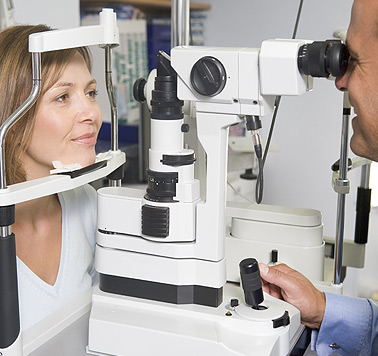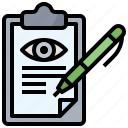
Laser procedures are performed in treatment rooms of the Eye Surgery Center of San Francisco, rather than the operating room.
Your preparation will be the same as if you are having an eye examination in your doctor’s office.
Unless your doctor instructs otherwise, you will not need to alter your regular medications.
You will not receive any sedation, and only the eye receiving treatment will be dilated and numbed with anesthetic drops.
How do I prepare for the procedure?
- Your healthcare provider will tell you how to prepare. Although it is not mandatory, arrange to have someone drive you home after the procedure. You may need to have one (1) eye treated at a time. Treatment may be a few weeks apart. Make sure you arrange to have someone drive you home after each treatment session.
- Bring dark sunglasses to your laser treatment appointments. Drops are used to dilate (widen) your pupils before treatment. Your pupils will absorb more harmful sunlight than usual while they are dilated. You will need to wear the dark sunglasses during your ride home.
- Tell your provider about all medicines you currently take. He or she will tell you if you need to stop any medicine for the procedure, and when to stop. He or she will tell you which medicines to take or not take on the day of the procedure.
What will happen during the procedure?
Your healthcare provider will talk to you about what to expect for your exact procedure.
- You may be given local anesthesia as eyedrops or shots to help prevent discomfort. You may still feel a mild ache during the procedure, but you should not feel pain. A contact lens may or may not be placed on your cornea. The lens will keep your eye still and help the laser focus.
- The machine used for the procedure is similar to the machine used during a regular eye exam. You will sit with your chin on the chinrest and your forehead against the headrest. You may be asked to look at a target with the eye that is not being treated. This helps you keep your treated eye where your provider wants it during treatment.
- Your healthcare provider will aim the laser where you need treatment. The number of bursts from the laser will depend on the reason you are having treatment. You may hear a click or similar sound with each burst. You will see flashes of bright light during the procedure. Tell your provider if you feel severe pain while the laser is being used. He or she may need to make changes to your procedure.
What should I expect after the procedure?
- You may be given drops to reduce pressure in your eye.
- You should be able to return to most activities right away.
- You may feel a mild ache in your eye or see flashes of light for a day or two.
- Your vision may be blurry for up to a week.
- You may have a headache for a few hours.
Care Agreement
You have the right to help plan your care. Learn about your health condition and how it may be treated. Discuss treatment options with your healthcare providers to decide what care you want to receive. You always have the right to refuse treatment. The above information is an educational aid only. It is not intended as medical advice for individual conditions or treatments. Talk to your doctor, nurse or pharmacist before following any medical regimen to see if it is safe and effective for you.





